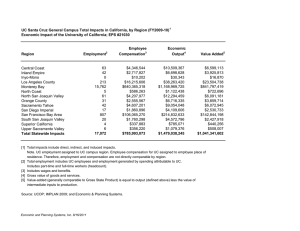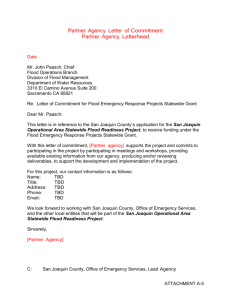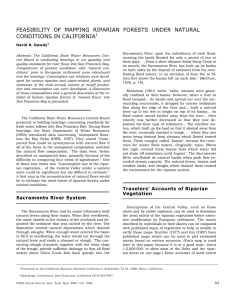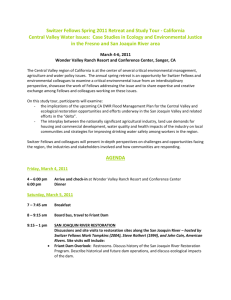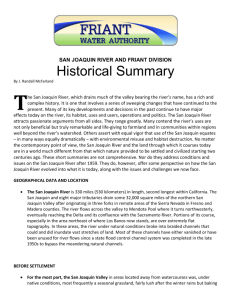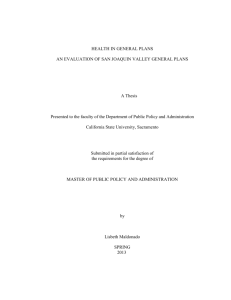Sen. Natural Resources And Water
advertisement
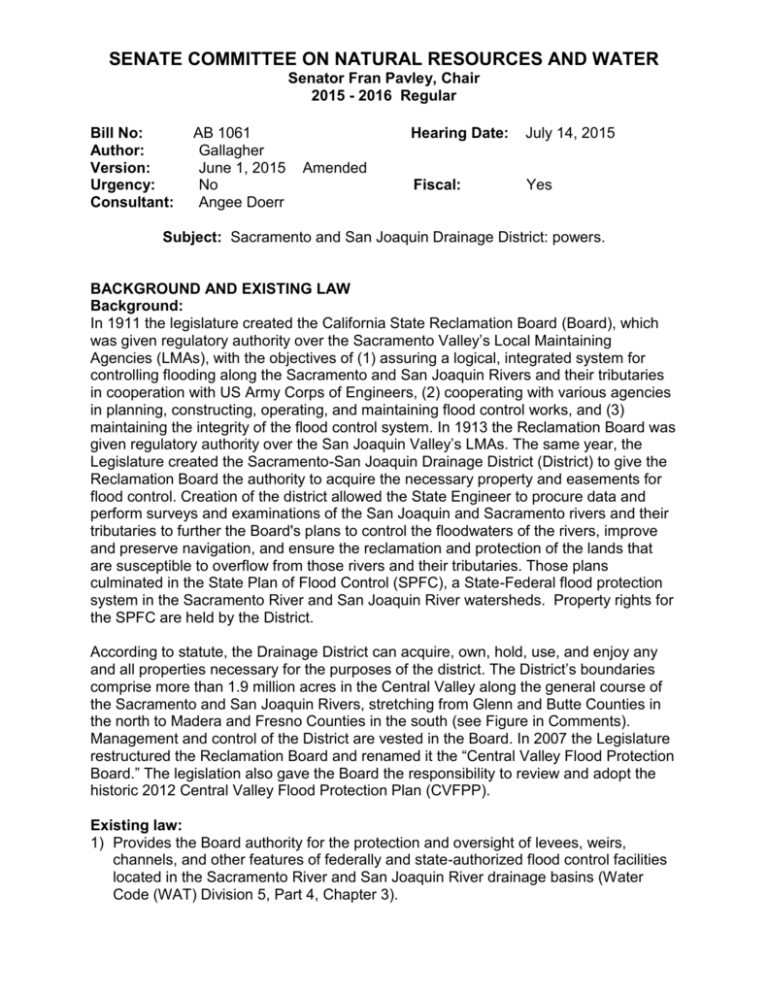
SENATE COMMITTEE ON NATURAL RESOURCES AND WATER Senator Fran Pavley, Chair 2015 - 2016 Regular Bill No: Author: Version: Urgency: Consultant: AB 1061 Gallagher June 1, 2015 No Angee Doerr Hearing Date: July 14, 2015 Fiscal: Yes Amended Subject: Sacramento and San Joaquin Drainage District: powers. BACKGROUND AND EXISTING LAW Background: In 1911 the legislature created the California State Reclamation Board (Board), which was given regulatory authority over the Sacramento Valley’s Local Maintaining Agencies (LMAs), with the objectives of (1) assuring a logical, integrated system for controlling flooding along the Sacramento and San Joaquin Rivers and their tributaries in cooperation with US Army Corps of Engineers, (2) cooperating with various agencies in planning, constructing, operating, and maintaining flood control works, and (3) maintaining the integrity of the flood control system. In 1913 the Reclamation Board was given regulatory authority over the San Joaquin Valley’s LMAs. The same year, the Legislature created the Sacramento-San Joaquin Drainage District (District) to give the Reclamation Board the authority to acquire the necessary property and easements for flood control. Creation of the district allowed the State Engineer to procure data and perform surveys and examinations of the San Joaquin and Sacramento rivers and their tributaries to further the Board's plans to control the floodwaters of the rivers, improve and preserve navigation, and ensure the reclamation and protection of the lands that are susceptible to overflow from those rivers and their tributaries. Those plans culminated in the State Plan of Flood Control (SPFC), a State-Federal flood protection system in the Sacramento River and San Joaquin River watersheds. Property rights for the SPFC are held by the District. According to statute, the Drainage District can acquire, own, hold, use, and enjoy any and all properties necessary for the purposes of the district. The District’s boundaries comprise more than 1.9 million acres in the Central Valley along the general course of the Sacramento and San Joaquin Rivers, stretching from Glenn and Butte Counties in the north to Madera and Fresno Counties in the south (see Figure in Comments). Management and control of the District are vested in the Board. In 2007 the Legislature restructured the Reclamation Board and renamed it the “Central Valley Flood Protection Board.” The legislation also gave the Board the responsibility to review and adopt the historic 2012 Central Valley Flood Protection Plan (CVFPP). Existing law: 1) Provides the Board authority for the protection and oversight of levees, weirs, channels, and other features of federally and state-authorized flood control facilities located in the Sacramento River and San Joaquin River drainage basins (Water Code (WAT) Division 5, Part 4, Chapter 3). AB 1061 (Gallagher) Page 2 of 3 2) Requires plans that involve the construction, enlargement, or alteration of any levee, embankment, canal, or other excavation in the bed of or along or near the banks of the Sacramento or San Joaquin Rivers or any of their tributaries or specified lands to be approved by the Board before such activity is commenced (WAT Division 5, Part 4 Chapter 3). 3) Vests management and control of the District in the Board (WAT Section 8502). 4) Authorizes the District to acquire, own, hold, use, and enjoy any and all properties necessary for the purposes of the District (WAT Section 8504). PROPOSED LAW This bill: Amends WAT Section 8504 to allow the District to sell, lease, or rent properties, and use any revenue that is generated from the lease or rental of said properties for flood control purposes. ARGUMENTS IN SUPPORT Writing in support, the bill’s sponsor, the California Central Valley Flood Control Association (CCVFCA) states that AB1061 will “enable agricultural, oil, and gas lease proceeds to be directly available for the maintenance of flood control projects. Applying lease revenues directly to maintenance activities will help in completing repairs and preservation of levees, while also maximizing environmental mitigation and enhancement.” ARGUMENTS IN OPPOSITION None Received COMMENTS Who currently controls proceeds from the lease or renting of District lands? The management and control of the District is vested in the Board, which falls under the authority of DWR. Board leases include traditional grazing and agricultural leases as well as oil and gas leases that generate rent and royalties. Existing law requires all lease revenues from land where DWR is the lessor to be deposited directly into the General Fund. Similar Legislation: SB749 (Wolk, 2013, Chapter 387) amended Fish and Game Code Section 1745.1 to authorize the Department of Fish and Wildlife to lease department-managed lands for agricultural activities. In addition, the bill allowed any moneys collected from these agricultural leases to be used to support the management, maintenance, restoration, and operations of department-managed lands. One example of a successful management project is the Yolo Basin Wildlife Refuge, where lands leased for the growing of rice provide habitat for waterfowl and other wildlife species, and managed grazing in other parts of the refuge help to maintain vernal pool habitat. The revenues generated from the leases also assist the DFW in covering maintenance and operations costs for the refuge. AB 1061 (Gallagher) Page 3 of 3 SUPPORT California Central Valley Flood Control Association (CCVFCA) (Sponsor) Association of California Water Agencies (ACWA) OPPOSITION None Received -- END --
